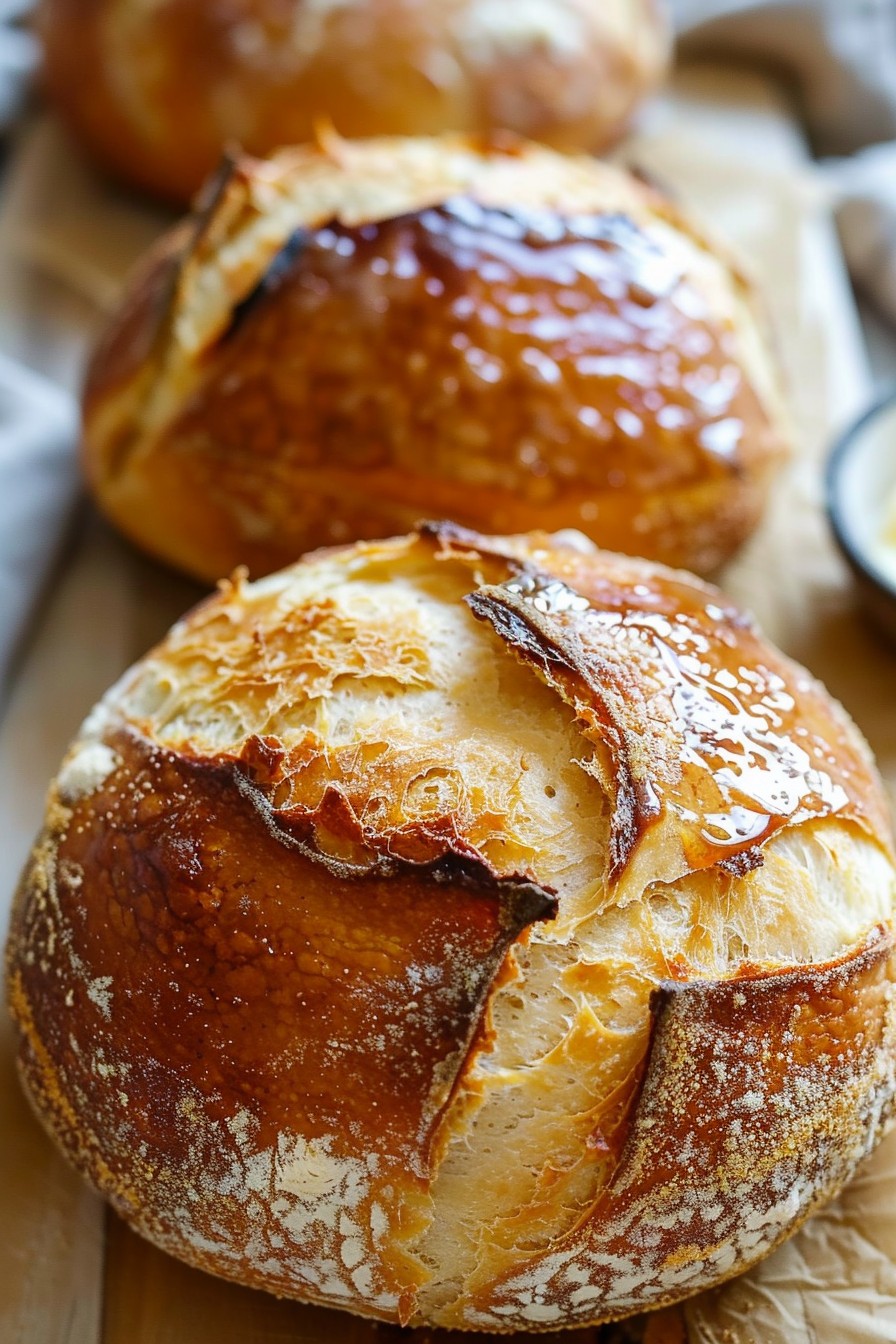Crafting the perfect loaf of salt rising bread is an adventure in baking that rewards patience with unparalleled flavor. This recipe demystifies the process, offering a step-by-step guide to achieving that distinctive tangy taste and fluffy texture that salt rising bread is famous for.
Why This Recipe Works
- Unique Fermentation: Unlike traditional bread, salt rising bread uses a bacterial starter for fermentation, giving it a unique flavor profile.
- No Yeast Needed: This recipe skips the yeast, relying instead on the natural bacteria found in cornmeal and potatoes to rise.
- Perfect Texture: The slow fermentation process results in a bread that’s incredibly moist and tender with a crisp crust.
Ingredients
- 1 cup cornmeal
- 2 cups milk, scalded
- 1 teaspoon sugar
- 1 teaspoon salt
- 4 cups all-purpose flour, divided
- 1/2 cup warm water (110°F)
- 1 tablespoon butter, melted
Equipment Needed
- Large mixing bowl
- Wooden spoon
- Measuring cups and spoons
- Loaf pan
- Oven
Instructions

Prepare the Starter
In a large bowl, combine the cornmeal, scalded milk, sugar, and salt. Stir well to combine. Cover with a clean cloth and let it sit in a warm place (about 100°F) for 12-24 hours, or until bubbly and slightly sour smelling. This is your starter.
Mix the Dough
Add 2 cups of flour to the starter, mixing well with a wooden spoon. Gradually add the warm water and melted butter, continuing to mix until a sticky dough forms. Gradually add the remaining flour until the dough is soft but not sticky.
First Rise
Cover the dough with a damp cloth and let it rise in a warm place for 3-4 hours, or until doubled in size. The dough should be puffy and full of bubbles.
Shape and Second Rise
Turn the dough out onto a floured surface and shape it into a loaf. Place it in a greased loaf pan, cover, and let rise again for 1-2 hours, or until the dough rises above the rim of the pan.
Bake to Perfection
Preheat your oven to 350°F. Bake the bread for 40-45 minutes, or until golden brown and sounds hollow when tapped. Let cool on a wire rack before slicing.
Tips and Tricks
Creating the perfect environment for your starter is crucial. If your kitchen is cool, consider placing the bowl in an oven with the light on to maintain a consistent warm temperature. Additionally, the quality of your ingredients can make or break this bread. Use fresh, high-quality cornmeal and milk for the best results. Finally, patience is key. The slow fermentation process is what gives salt rising bread its unique flavor and texture, so don’t rush it.
Recipe Variations
- Herb Infused: Add dried herbs like rosemary or thyme to the dough for an aromatic twist.
- Cheesy Delight: Mix in shredded cheddar cheese for a savory version.
- Sweet Version: Increase the sugar and add cinnamon for a sweet take on this traditional bread.
Frequently Asked Questions
Why is my starter not bubbling?
If your starter isn’t bubbling after 24 hours, it might be too cold. Try moving it to a warmer spot or extending the fermentation time. Also, ensure your milk was properly scalded to kill any competing bacteria.
Can I use instant cornmeal?
Yes, instant cornmeal can be used, but the texture might slightly differ. Traditional cornmeal is preferred for its coarser texture and more robust flavor.
How do I store salt rising bread?
Store it in an airtight container at room temperature for up to 3 days. For longer storage, wrap it tightly and freeze for up to a month.
Summary
Salt rising bread is a unique and flavorful alternative to traditional yeast breads. With its distinctive tangy taste and tender crumb, it’s a rewarding project for any baker willing to embrace the slow fermentation process.